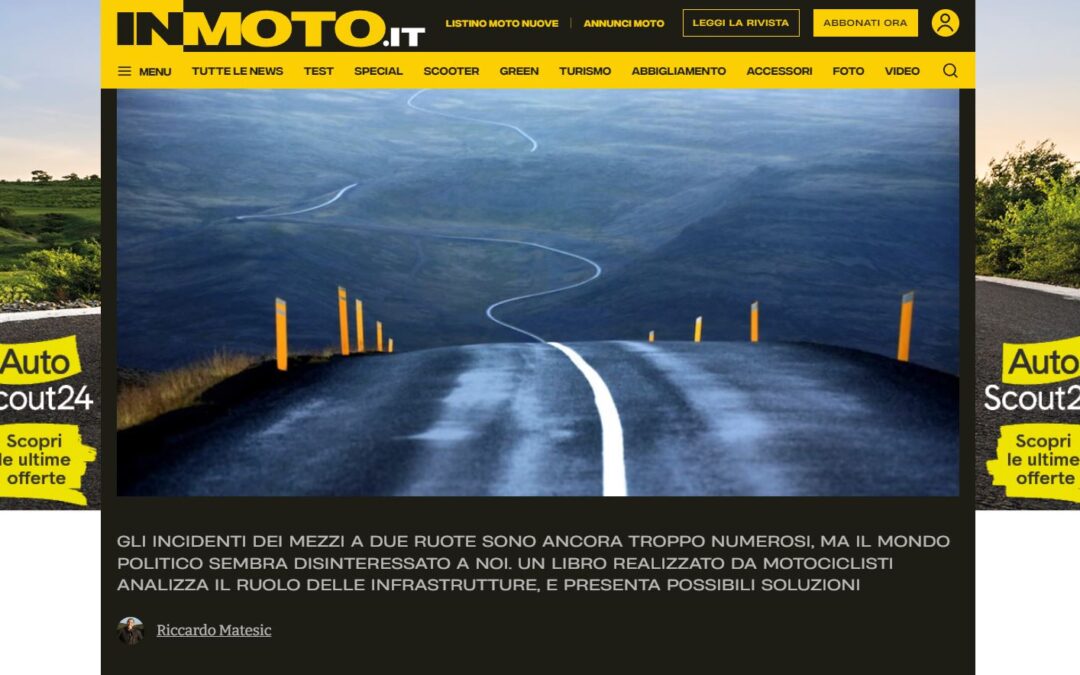Original Article published in InMoto.it
Written by: Riccardo Matesic
In the article, Rob McInerney, CEO of iRAP, discusses iRAP’s role in improving safer road infrastructure, countries that have embraced the iRAP methodology and the Star Rating model and our partnerships across the world which focus on the common goal of saving lives on our roads.
The article is the second instalment of an investigation into how to make European roads safer for motorcyclists. This follows on from the report published earlier this year – Safer Roads for Motorcyclists, produced by the Swedish Motorcyclists’ Association (SMC) and the European Federation of Motorcycle Associations (FEMA). A report that stems from the realisation that the number of accidents involving two-wheelers in Europe is unacceptably high.
Read the excerpt from the article, focussing on Rob McInerney’s interview below:
How did the Star Rating System come about and how widespread is it in the world today?
“The Road Assessment Programme was launched in Europe in 1999. Building on the success of EuroNCAP, our programme sought to measure the intrinsic safety performance of road infrastructure. To date, over 1,500,000 km of assessments have been completed, in more than 125 countries worldwide. And more than EUR 90 billion of road investments have been made safer through iRAP partnerships globally‘. (https://irap.org/about-us/where-we-work/)
Which countries are the most active?
“Spain, UK, Croatia, Portugal, Brazil, Mexico, Colombia, Australia, India, China, Philippines and South Africa. In each country there are passionate and committed professionals who understand the importance of safe infrastructure for all road users. Using the iRAP global standard, they are able to implement an objective, evidence-based measurement of infrastructure safety. A measurement now adopted by UN Member States as part of the global road safety performance targets and the Decade of Road Safety Action Plan 2021-2030. Leading countries have generally set the policy goal of 3-star or better roads for all road users. And they have used the iRAP assessment to develop optimised investment plans to ensure funding for upgrades that will save lives and reduce the cost of injuries‘. (https://irap.org/policies-into-practice/).
What happens when you make your assessments known (especially if there are poor Star Rating results)?
“iRAP focuses on partnerships for life-saving impact. One of our mottos is that we have not saved a life until the road is improved. Each iRAP assessment includes an Safer Roads Investment Plan that identifies all cost-effective treatments that can maximise the lives saved for every Euro invested. So, even if the existing road has a poor Star Rating, the opportunity for improvement is where all the positive energy and efforts are focused. The necessary investments then benefit everyone; as they save lives, save money and create jobs. The key element of the iRAP programme,‘ McInerney concludes, ‘is that we connect over 25,000 partners worldwide.
Additional note: Every country and every agency and partner is different and we definitely see varying approaches and success. Great ideas and success from one country can be quickly shared with all partners to maximise our chances of reaching the SDG and EU Target to halve road deaths and serious injuries by 2030 and approach zero by 2050. (e.g. https://irap.org/latest-news/)
Please note this article was originally published in Italian.


















